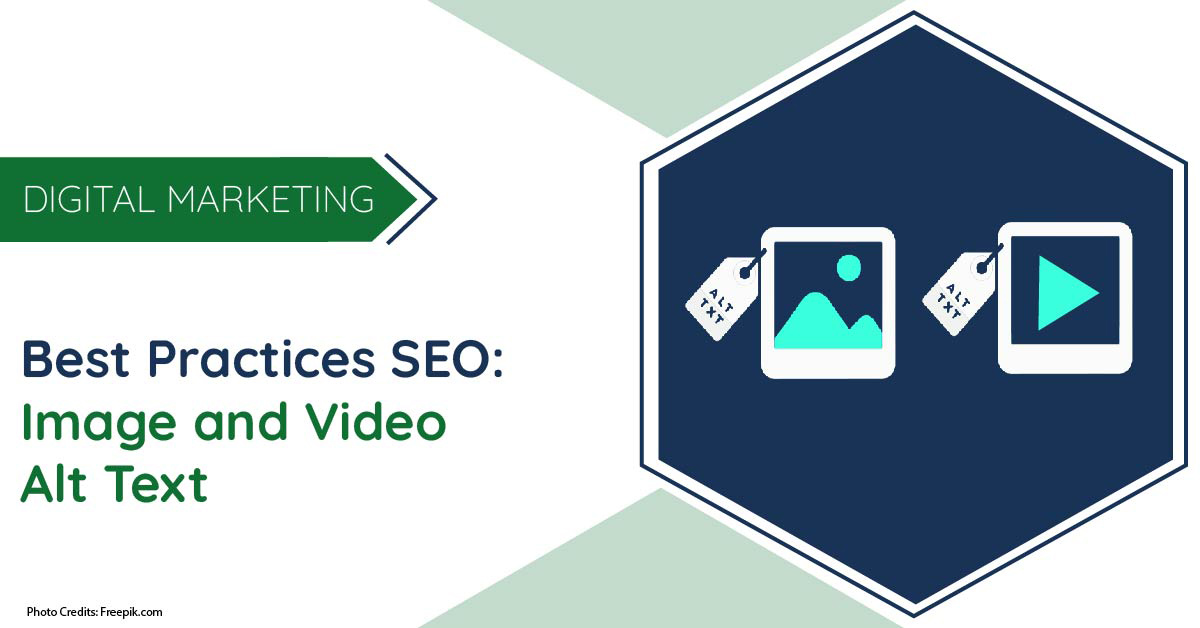

Contact
+91 9833092357 / +91 80801 78198Let's work together to bring your products and services to new digital heights!
Get in Touch

Oct 23, 2023

Search engine optimization (SEO) is crucial for optimizing your website’s visibility in search engine results pages (SERPs). Image and video alt text plays a significant role in SEO, especially for accessibility and providing context to search engines about the content of your media files. Here are some best practices for optimizing image and video alt text:
Be Descriptive: Describe the image accurately and concisely. If the image contains important information, make sure to convey that information in the alt text.
Use Keywords (If Relevant): If appropriate, include relevant keywords that describe the image content and relate to your overall content strategy. However, avoid keyword stuffing – only use keywords if they naturally fit within the description.
Keep it Concise: Alt text should be relatively short and to the point. Aim for a few words to a sentence, conveying the essential information.
Avoid Redundancy: If the image is purely decorative and doesn’t add any unique content, it’s best to leave the alt text empty (alt=””). For example, if you have a decorative border around an image, it doesn’t need alt text.
Don’t Rely on Alt Text Alone: Try to incorporate important information from images into the surrounding text content. This ensures that users (including those using screen readers) and search engines get the context.
Use Proper Formatting: If the image includes text, it’s advisable to embed the text within the image using CSS or SVG instead of relying on an image of text. Screen readers can’t read text within images.
Provide a Detailed Description: Write a concise and informative description of the video content. Include relevant keywords if they fit naturally into the description.
Include Transcripts and Captions: For videos, provide both transcripts (text version of the video content) and captions (synchronized text displayed along with the video). This enhances accessibility and SEO.
Utilize Schema Markup: Use VideoObject schema markup to provide additional information about the video content to search engines. This can include video description, duration, upload date, and more.
Optimize Video Titles and Descriptions: The title and description of the video on the hosting platform (like YouTube or Vimeo) should be descriptive and contain relevant keywords. This helps in both search engine rankings and user engagement.
Submit Video Sitemaps: If applicable, submit a video sitemap to search engines like Google. A video sitemap provides metadata about video content on your site, helping search engines index your videos more effectively.
Remember, the primary goal of alt text for images and videos is to enhance accessibility for people with disabilities. Properly optimized alt text not only improves SEO but also ensures a better user experience for all visitors to your website. Let the best SEO strategy agency in Mumbai make your audience find you as opposed to you finding them.
Explore how you can leverage meta titles and meta descriptions for efficient SEO results.
BE SEEN, GET CONNECTED, GO VIRAL!
Let's work together to conquer the digital space

Office Address
6th Floor, Office Number 603, Ashok Premises Old Nagardas Crossroad, opposite Saraswati Towers, Andheri East, Mumbai, Maharashtra 400069
info@idigitize.co
Contact
@ 2024, iDigitize I All Rights Reserved I Designed, Developed & Managed By iDigitize Infotech LLP